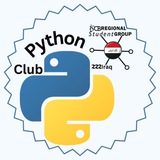#Problem.3
In DNA strings, symbols 'A' and 'T' are complements of each other, as are 'C' and 'G'.
The reverse complement of a DNA string s is the string s^c formed by reversing the symbols of s, then taking the complement of each symbol (e.g., the reverse complement of "GTCA" is "TGAC").
Given: A DNA string s of length at most 1000 bp.
Return: The reverse complement s^c
of s.
Sample Dataset:
AAAACCCGGT
Sample Output:
ACCGGGTTTT
Upload your answer here
In DNA strings, symbols 'A' and 'T' are complements of each other, as are 'C' and 'G'.
The reverse complement of a DNA string s is the string s^c formed by reversing the symbols of s, then taking the complement of each symbol (e.g., the reverse complement of "GTCA" is "TGAC").
Given: A DNA string s of length at most 1000 bp.
Return: The reverse complement s^c
of s.
Sample Dataset:
AAAACCCGGT
Sample Output:
ACCGGGTTTT
Upload your answer here
tgoop.com/rsgiraqpython/16
Create:
Last Update:
Last Update:
#Problem.3
In DNA strings, symbols 'A' and 'T' are complements of each other, as are 'C' and 'G'.
The reverse complement of a DNA string s is the string s^c formed by reversing the symbols of s, then taking the complement of each symbol (e.g., the reverse complement of "GTCA" is "TGAC").
Given: A DNA string s of length at most 1000 bp.
Return: The reverse complement s^c
of s.
Sample Dataset:
AAAACCCGGT
Sample Output:
ACCGGGTTTT
Upload your answer here
In DNA strings, symbols 'A' and 'T' are complements of each other, as are 'C' and 'G'.
The reverse complement of a DNA string s is the string s^c formed by reversing the symbols of s, then taking the complement of each symbol (e.g., the reverse complement of "GTCA" is "TGAC").
Given: A DNA string s of length at most 1000 bp.
Return: The reverse complement s^c
of s.
Sample Dataset:
AAAACCCGGT
Sample Output:
ACCGGGTTTT
Upload your answer here
BY RSG-Iraq Python Club
Share with your friend now:
tgoop.com/rsgiraqpython/16
